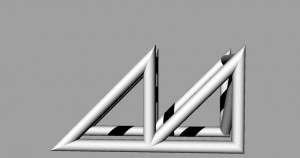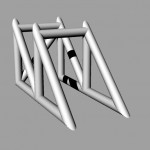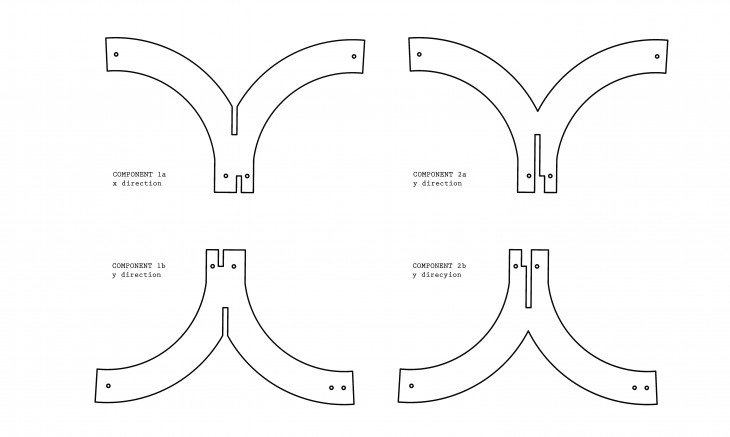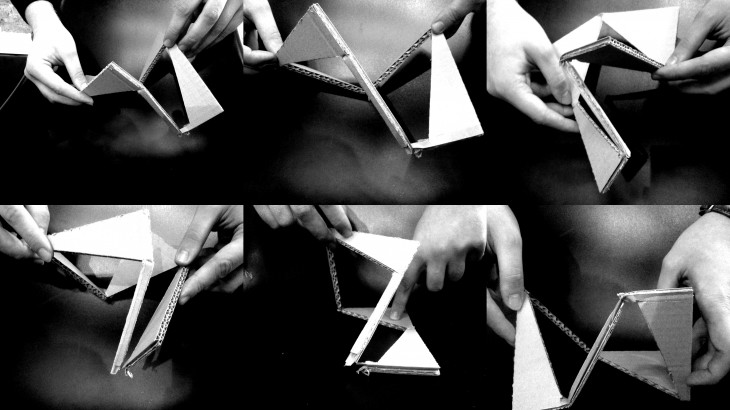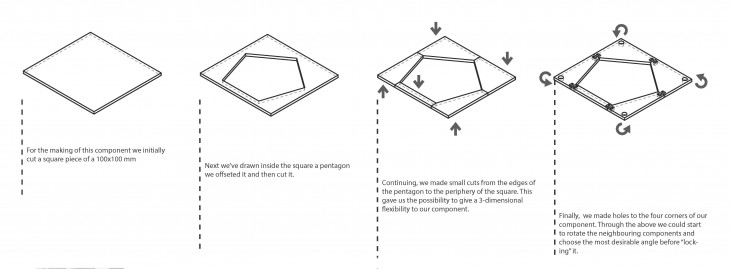In order to study and understand this notion of a self-supporting structure, a number of tests where conducted. These experimental forms where all constructed by folding a single piece of paper. By repeating this action and directing the folds in contrasting angles, we discovered the parameters for component behaviour.
Due to the orientation of the fold, the compressive force is applied through the vertical fold on the Y axis. The forces flow from x and y co-ordinates, which provides structural strength. Therefore the tension is held on the X axis which are the weaker points of the structure.


